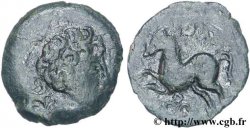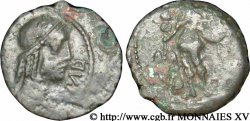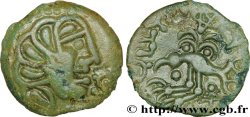- Accueil
- >
- >
v36_1257 - GALLIA - ARVERNI (Regione di Clermont-Ferrand) Quart de statère d’or à la joue barrée et à la rouelle
MONNAIES 36 (2008)
Начальная цена : 820.00 €
Назначить цену : 1 400.00 €
Цена реализации : 820.00 €
Количество ставок : 1
Максимальная предлагаемая цена : 930.00 €
Начальная цена : 820.00 €
Назначить цену : 1 400.00 €
Цена реализации : 820.00 €
Количество ставок : 1
Максимальная предлагаемая цена : 930.00 €
Тип Quart de statère d’or à la joue barrée et à la rouelle
Дата: c. 120-60 AC.
Металл: gold
Диаметр: 11,5 mm
Ориентация осей монеты: 12 h.
Вес: 1,79 g.
Редкость: R3
Комментарии о состоянии
Flan un peu court et ovale, mais bon centrage au droit et frappe légèrement décalée au revers. La tête est très en volume, malgré une usure marquée ou un coin usé. Le revers est quant à lui bien net et d’un traitement très fin
Лицевая сторона
Аверс: легенда: ANÉPIGRAPHE.
Аверс: описание: Tête (laurée ?) à droite, la joue barrée et la chevelure abondante.
Обратная сторона
Реверс: Описание: Char avec un cheval à droite et conduit par l’aurige ; une rouelle perlée entre les jambes.
Реверс: легенда: OP(...)
Комментарий
Bien que ce quart de statère n’a pas le symbole d’Abydos, il est à rapprocher des premières monnaies à la joue barrée (statères et quarts de statères) portant les lettres AP ligaturées, formant parfois un triskèle. Cet exemplaire appartient au type II “à la roue” de la série 1025 du Nouvel Atlas. La monnaie DT. 3330 (BN. 3672) est issue des mêmes coins de droit et de revers que l’exemplaire proposé ici. Le centrage du revers permet de supposer la présence d’une légende dégénérée, sous la rouelle (?).
Semble être le second exemplaire répertorié après celui de la BN qui est systématiquement pris comme monnaie de référence pour ce type. La légende OP a été retenue par G. Depeyrot dans le MONETA, mais pas dans le Nouvel Atlas.
Although this quarter stater does not have the symbol of Abydos, it is similar to the first coins with a barred cheek (staters and quarter staters) bearing the letters AP ligatured, sometimes forming a triskelion. This example belongs to type II “with the wheel” of series 1025 of the New Atlas. The coin DT. 3330 (BN. 3672) comes from the same obverse and reverse dies as the example offered here. The centering of the reverse suggests the presence of a degenerate legend, under the wheel (?). Seems to be the second example listed after that of the BN which is systematically taken as the reference coin for this type. The legend OP was retained by G. Depeyrot in the MONETA, but not in the New Atlas
Semble être le second exemplaire répertorié après celui de la BN qui est systématiquement pris comme monnaie de référence pour ce type. La légende OP a été retenue par G. Depeyrot dans le MONETA, mais pas dans le Nouvel Atlas.
Although this quarter stater does not have the symbol of Abydos, it is similar to the first coins with a barred cheek (staters and quarter staters) bearing the letters AP ligatured, sometimes forming a triskelion. This example belongs to type II “with the wheel” of series 1025 of the New Atlas. The coin DT. 3330 (BN. 3672) comes from the same obverse and reverse dies as the example offered here. The centering of the reverse suggests the presence of a degenerate legend, under the wheel (?). Seems to be the second example listed after that of the BN which is systematically taken as the reference coin for this type. The legend OP was retained by G. Depeyrot in the MONETA, but not in the New Atlas







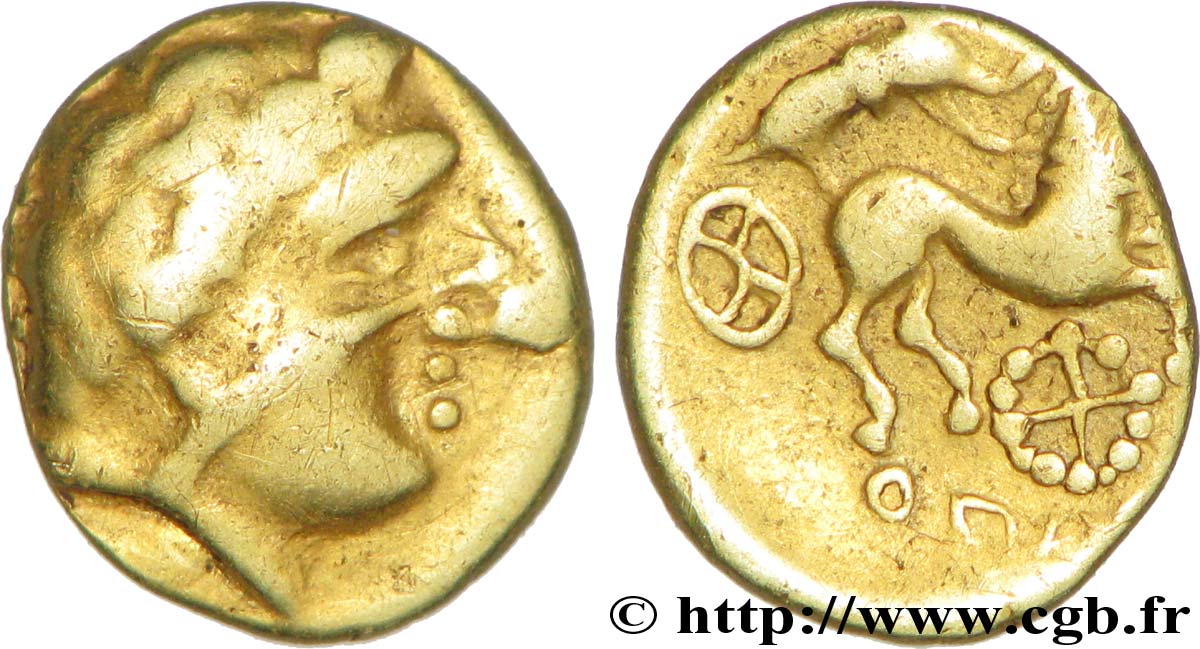
 Cообщить об ошибке
Cообщить об ошибке Распечатать страницу
Распечатать страницу Отправить мой выбор
Отправить мой выбор Задать вопрос
Задать вопрос Consign / sell
Consign / sell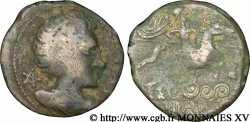
 Информация
Информация